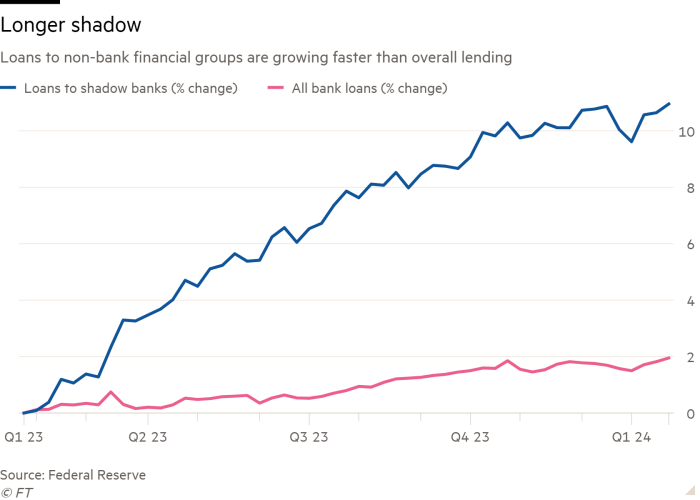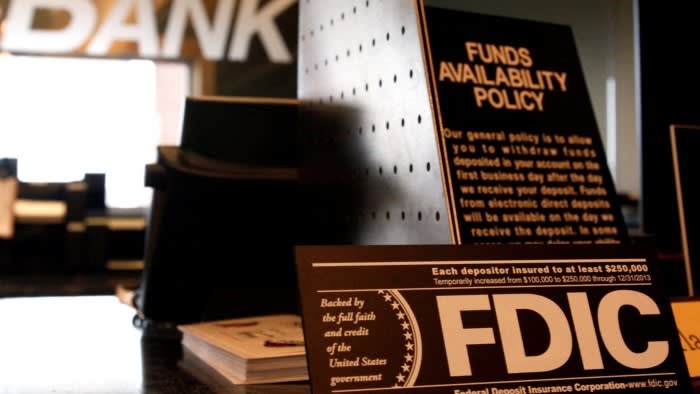Unlock the Editor’s Digest for free
Roula Khalaf, Editor of the FT, selects her favourite stories in this weekly newsletter.
The amount US financial institutions have loaned to shadow banks such as fintechs and private credit groups has passed $1tn, as regulators warn that growing ties between traditional and alternative lenders could present systemic risks.
The US Federal Reserve reported on Friday that US banks crossed the 13-figure threshold in loans outstanding to non-deposit-taking financial companies at the end of January. These hedge funds, private equity firms, direct lenders and others use the money to leverage investments and increasingly lend it out to a range of risky borrowers that regulators have discouraged banks from lending to directly.
That amount is up 12 per cent in the past year, making it one of banking’s fastest-growing businesses when overall loans growth has been sluggish, up just 2 per cent.

The rapid rise in loans to shadow banks concerns regulators because there is very little information or oversight regarding the risks being taken by those groups. Last month, EU regulators said they would dig deeper into the ties between traditional lenders and shadow banks.
Acting head of the Office of the Comptroller of the Currency Michael Hsu, one of the top US bank regulators, recently told the Financial Times that he thought the lightly regulated lenders were pushing banks into lower-quality and higher-risk loans.
“We need to solve for the race to the bottom,” said Hsu. “And I think part of the way to solve it is to put due attention on those non-banks.”
Recently, a number of banks have sought closer ties to non-bank lenders. Last month, Citigroup said it was partnering with an outside alternative investment manager, LuminArx, to provide “innovative leverage solutions” to its $2bn loan fund. Citi was also a leader on a $310mn loan to Sunbit, a buy-now, pay-later company that specialises in auto repair shops and dentist offices.
Last year, Wells Fargo signed a deal to lend billions to a new credit fund run by Centerbridge, a $40bn private equity firm that led the buyouts of restaurant chain P.F. Chang’s and business technology provider Computer Sciences Inc.
In 2010, when banks were first required to break out their lending to non-banks, the loans totalled just over $50bn for the entire banking sector. JPMorgan alone now has twice that in loans to non-banks.
For all banks, shadow bank financing now makes up more than 6 per cent of all loans, putting it just above auto loans at 5 per cent, and just below credit cards, which crossed $1tn for the first time just last year, at 7 per cent.
Late last year, the Federal Deposit Insurance Corporation proposed requiring banks to disclose more data on what types of shadow banks they are lending to.
Rather than reporting one category of non-deposit-taking financial groups, banks could soon have to say how much in total they have lent to private equity firms, credit funds and other consumer lenders.
Comments on the proposal are due at the end of this month. If enacted, banks could have to start reporting the more detailed information starting next quarter.
“We need more granularity,” said Gerard Cassidy, a bank analyst at RBC Capital Markets.
“There has been a lot of leveraged lending that has gone on in financial markets and this area could be one area where there is hidden exposure that investors might need to watch.”
